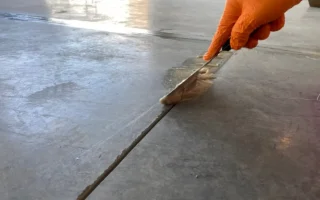Rug stains on hardwood floors can be a frustrating issue for homeowners. Addressing them promptly and effectively is key to maintaining the beauty of your flooring. Understanding the common types of stains and their causes provides valuable insight into prevention and treatment.
With a little know-how, you can tackle most rug stains at home using simple tools and solutions. Prevention is always better than cure—taking steps to protect your hardwood floor will save you from future headaches.
If you ever feel overwhelmed by stubborn stains or damage, don’t hesitate to ask for professional help. They have specialized products and techniques that can restore your floors without risk of further harm.
Why it’s important to address rug stains quickly

Rug stains on hardwood floors can be more than just an eyesore. There are often underlying issues that need to be addressed immediately when they occur. Stains can seep deeper into the wood when left untreated, causing discolouration and permanent damage.
Some stains—like food or pet accidents, can attract pests and bacteria. This affects your floor and poses health risks for your family.
Long-term stain removal becomes more difficult when it lingers. Quick action reduces the likelihood of requiring extensive refinishing or repair work down the line.
Addressing these blemishes promptly helps maintain both aesthetics and the longevity of your flooring. A proactive approach keeps your home looking its best while safeguarding against costly repairs in the future.
Common types of rug stains and their causes
Rug stains can come from various sources, each with its unique challenges. Food and drink spills are among the most common culprits. A dropped piece of pizza or a spilt glass of red wine can quickly leave an unsightly mark.
Pet accidents also rank high on the list. Whether it’s urine or vomit, these types of stains not only discolour rugs but can penetrate deeper into hardwood floors if left unattended.
Then there’s the issue of dirt and mud tracked in from outside. These stains often become stubborn as they dry out and embed into fibres.
Step-by-step guide for removing rug stains from hardwood floors

Next, gently blot the area with a clean cloth to remove excess liquid. Avoid rubbing, as that can spread the stain further.
Mix equal parts of white vinegar and water in a spray bottle for water-based stains like coffee or juice. Lightly mist the affected area and let it sit for about five minutes before dabbing it with a fresh cloth.
Sprinkle baking soda over the spot if you’re dealing with oil-based stains such as grease. Let it absorb for 10-15 minutes before vacuuming up.
After treating the stain, rinse the area with warm water using a damp cloth to remove any cleaning solution residue.
Tips for preventing future rug stains on hardwood floors
Prevention is always better than cure. Start by placing a high-quality rug pad underneath your rugs. This keeps the rug in place and adds an extra layer of protection for your hardwood floors.
Regular cleaning can make a significant difference. Vacuum rugs frequently to remove dirt and debris that may cause staining over time. A clean surface reduces the risk of particles embedding into fibres.
Use area rugs in high-traffic zones to absorb spills before they reach the floor. Choose washable options whenever possible, making maintenance easy.
When setting up furniture on or near your hardwood floors, use protective pads under your legs to avoid scratches or indentations that could trap moisture and lead to stains later.
When to seek professional help
Sometimes, rug stains can be stubborn. If you’ve tried multiple cleaning methods without success, it may be time to call the professionals.
Certain stains require specialized knowledge and products that are beyond home remedies. For example, pet urine or ink spills often penetrate deep into the wood’s finish. These types of stains might need expert intervention to prevent permanent damage.
If your hardwood floors show signs of discolouration or warping around the stained area, don’t hesitate to ask for help. Early intervention can save you from costly repairs later on.
If you need clarification on whether cleaning products are safe for your specific floor type, a professional can guide you through the best options tailored to your needs. Trusting an experienced cleaner provides peace of mind and ensures that your hardwood remains beautiful and intact.




